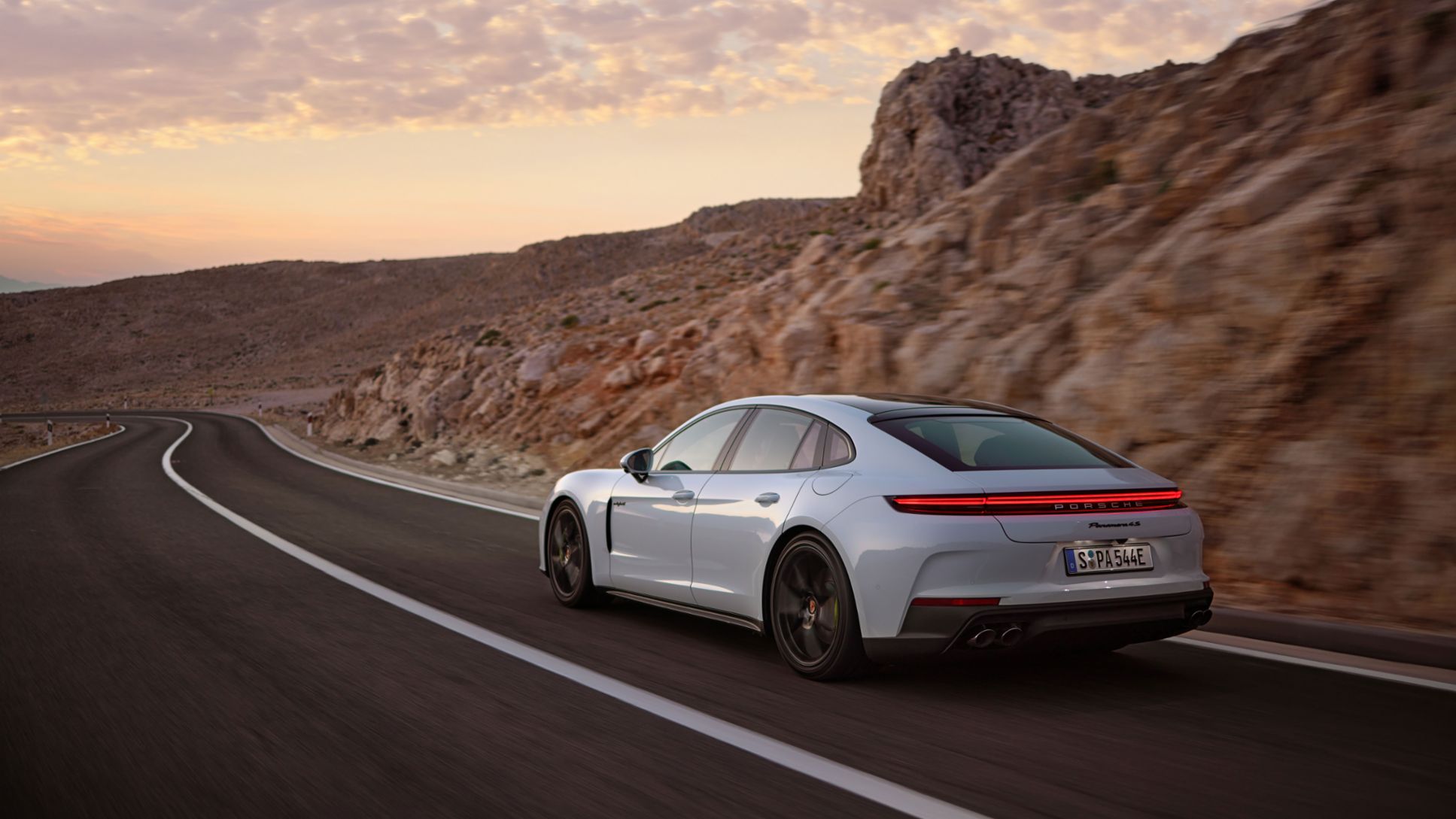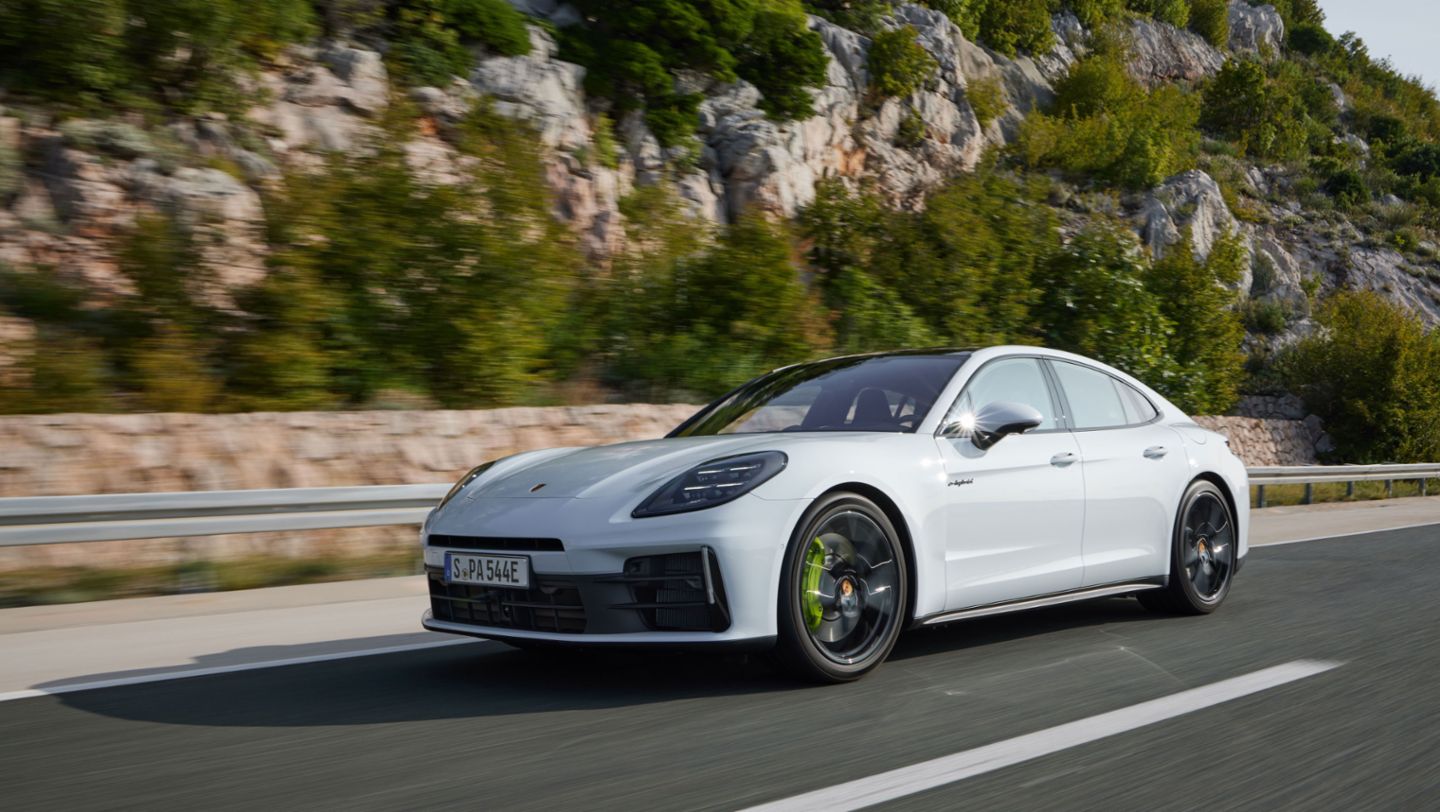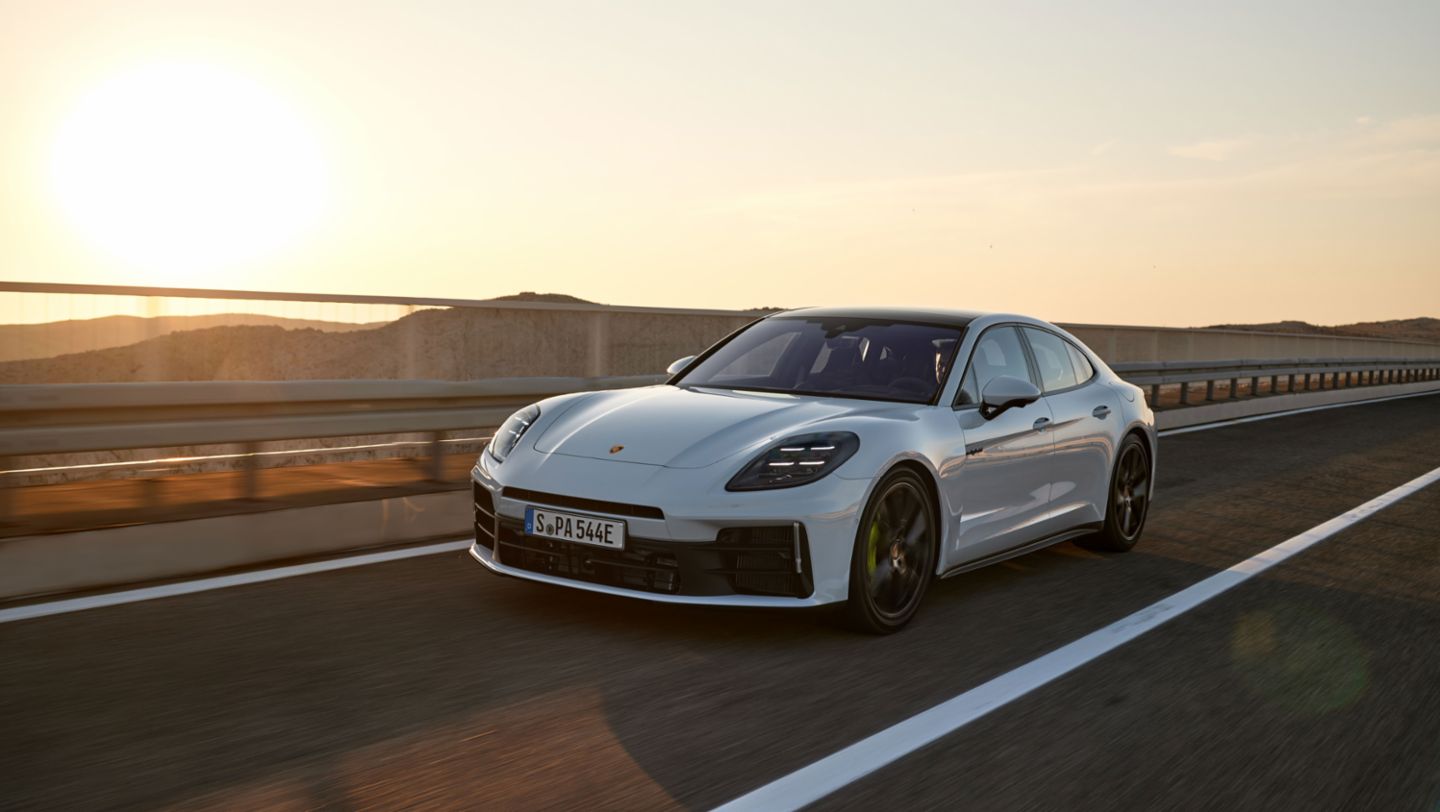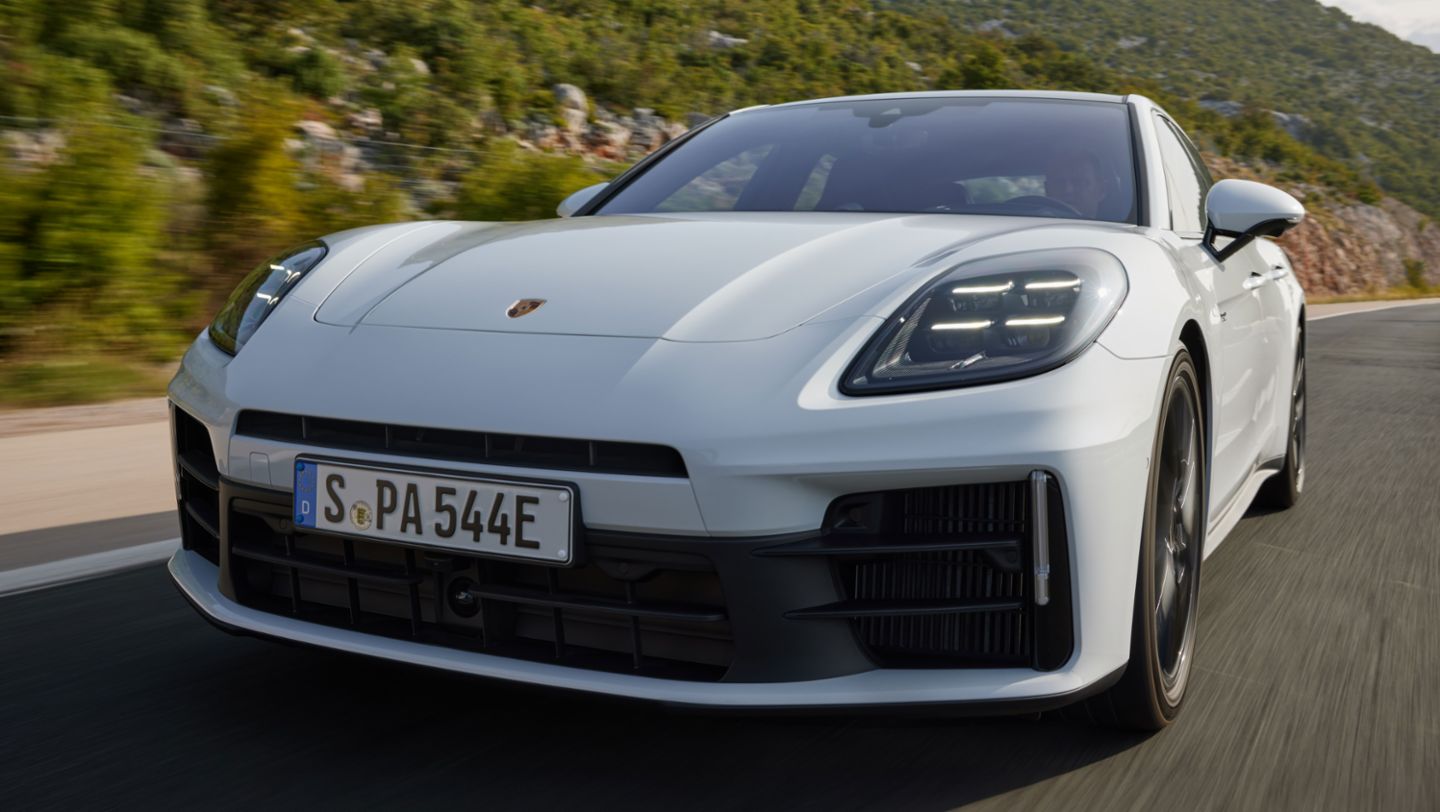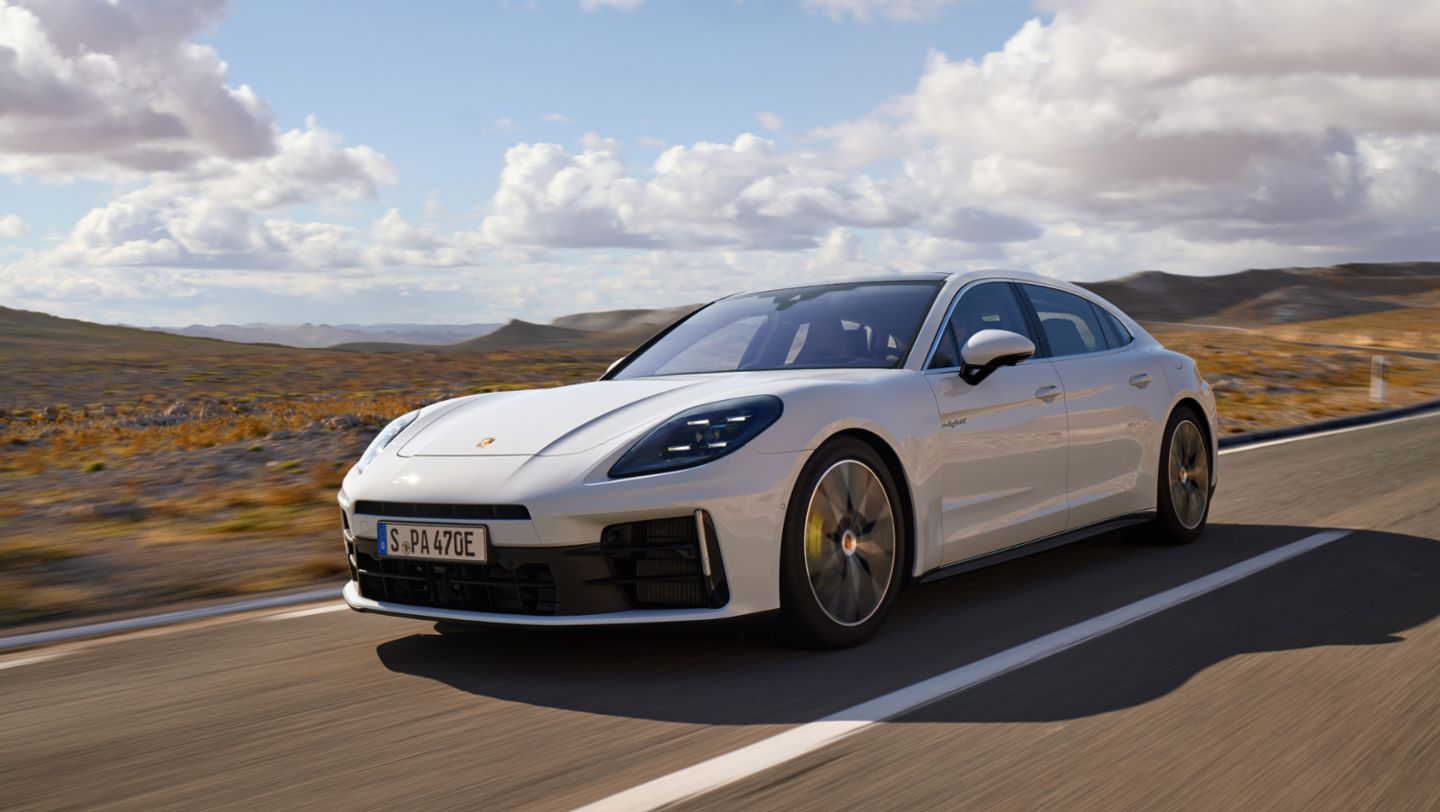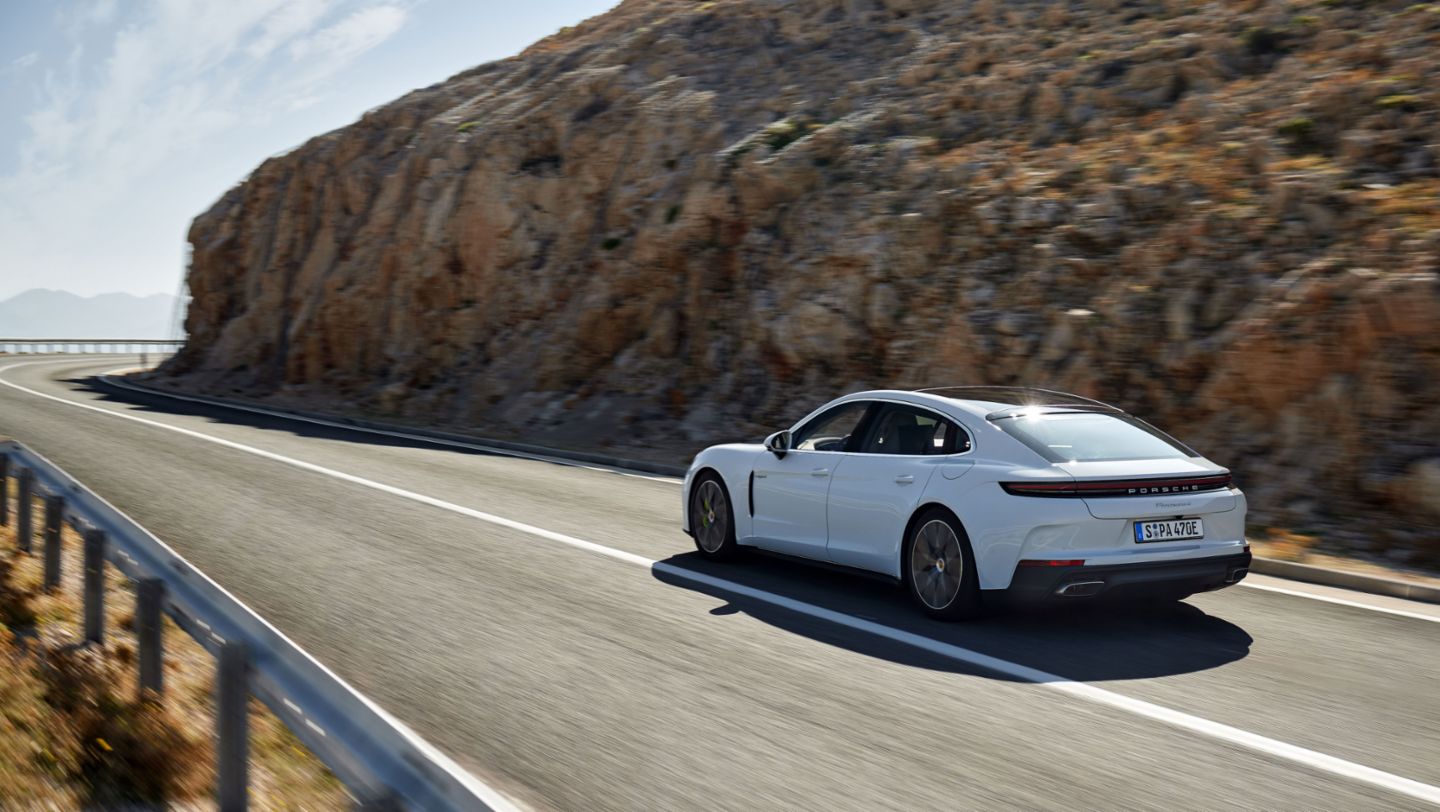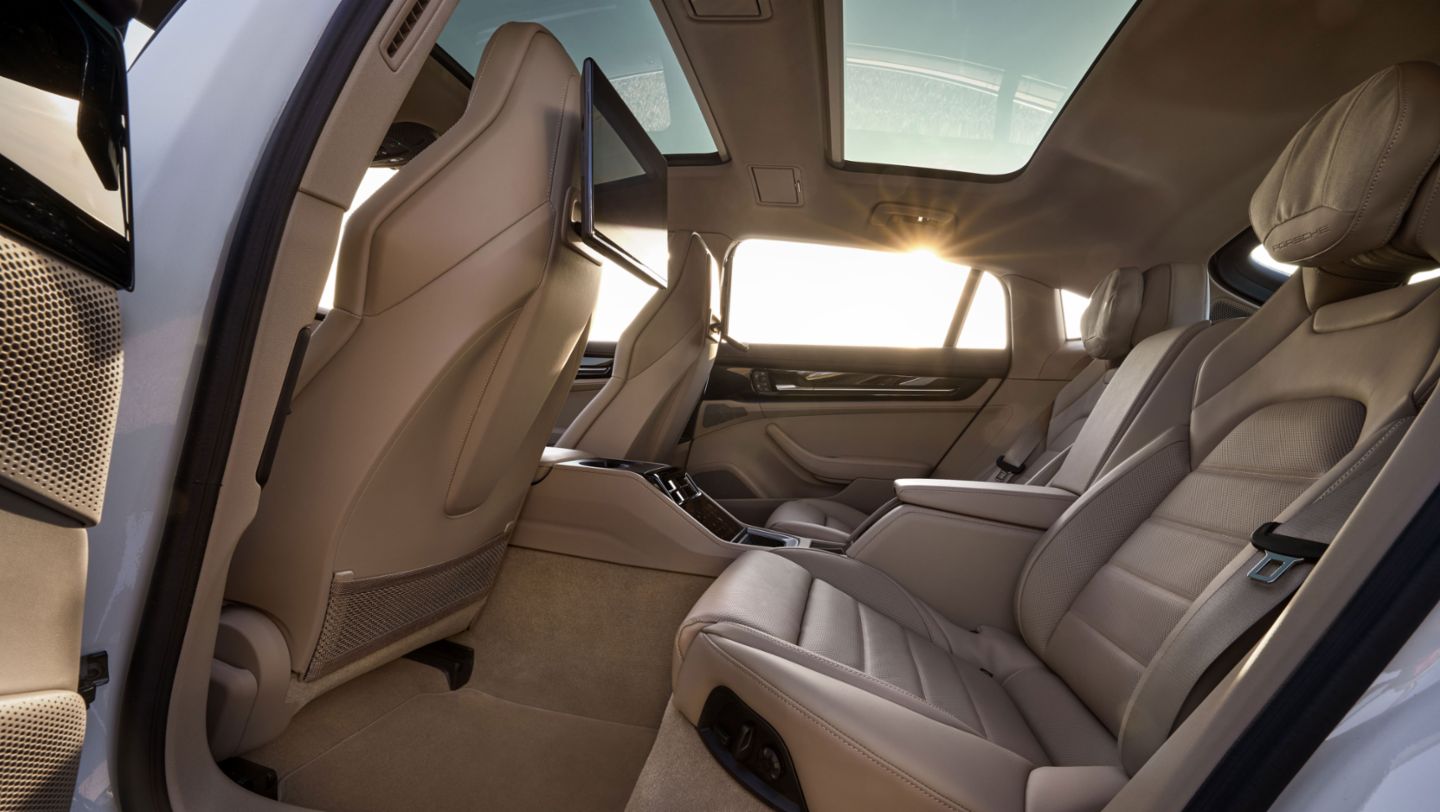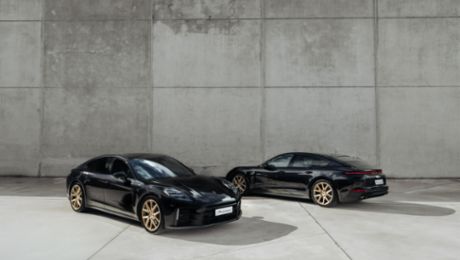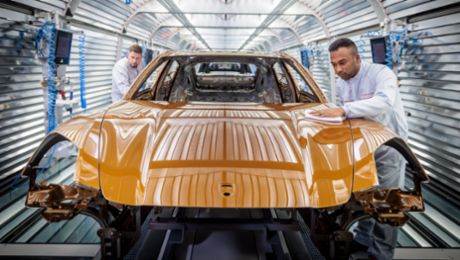Porsche is further expanding its range of powertrains for the Panamera sports sedan and now includes an Executive variant. As part of the E-Performance strategy, the Panamera 4 E-Hybrid and the Panamera 4S E-Hybrid have been added to the portfolio with immediate effect.
This is Porsche’s response to the particularly strong interest in efficient and dynamic e-hybrid powertrains in many markets. The Panamera will be available in a total of four performance variants of this advanced powertrain technology.
Powertrain: Optimised Hybrid-Performance
The Panamera 4 E-Hybrid is particularly efficient and versatile. To generate powerful acceleration, Porsche has combined a new e-hybrid system with a significantly revamped 2.9-litre V6 biturbo petrol engine (224 kW/304 PS)#. The system output of 346 kW (470 PS) and the maximum torque of 650 Nm enable acceleration from zero to 100 km/h in 4.1 seconds and a top speed of 280 km/h on the track.
The Panamera 4S E-Hybrid places a stronger focus on driving dynamics as well as sustained power delivery in the upper rev range. Its 2.9-litre biturbo six-cylinder engine delivers 260 kW (353 PS). The system output is 400 kW (544 PS) and the maximum torque is 750 Nm. This enables the Panamera 4S E-Hybrid to accelerate from zero to 100 km/h in 3.7 seconds and reach a top speed of 290 km/h on the track.
Compared to the previous generation, all Panamera E-Hybrid models offer a greater electric range, faster charging speed, better throttle response and better driving performance in almost all disciplines. At 25.9 kWh (gross), the new high voltage battery provides around 45 per cent more capacity in a comparable space. At the same time, the new 11 kW On-Board-AC-charger shortens the charging time to two hours and 39 minutes.*
With 140 kW (190 PS) and 450 Nm of torque, the completely new electric motor offers significantly more power than its predecessor. It is also integrated into the housing in an efficient and weight-optimised way, and into the oil cooling circulation of the PDK transmission. The internal rotor design (the rotor rotates inside the stator) reduces the mass inertia by 50 per cent, which improves the throttle response. With a recuperation of up to 88 kW, the electric motor also contributes to the significantly increased electric range of the Panamera E-Hybrid models.
E-Hybrid driving modes with optimised strategy
The four optimised E-Hybrid-specific driving modes, as well as the improved Sport and Sport Plus modes, further optimise the efficiency of the E-Hybrid models. The vehicles always start in the purely electric E-Power mode. Once the state of charge of the battery is under a certain minimum value, the system automatically switches to Hybrid Auto mode, which adapts the operating strategy to the current driving situation.
In addition, with active route guidance in Hybrid Auto, the operating strategy is further optimised by knowing the route ahead. In this way, the proportion of electrically driven distances in city traffic can be maximised and efficiency increased. The system uses both car and navigation data for this purpose.
In E-Hold mode, the current state of charge of the battery is preserved. In E-Charge mode, on the other hand, the combustion engine charges the battery to up to 80 per cent out of town and above 55 km/h, while the Panamera utilises the efficiency benefits of the hybrid drive in city traffic. In Sport and Sport Plus modes, Porsche reduces the target state of charge of the battery to 20 and 30 per cent respectively (previously 30 and 80 per cent). This increases efficiency without sacrificing performance.
E-Hybrids with innovative active suspension
Porsche equips all variants of the new Panamera with an adaptive two-chamber air suspension including Porsche Active Suspension Management (PASM) with two-valve dampers as standard.
The innovative Porsche Active Ride active suspension is also available for the E-Hybrid models as optional equipment. It combines the ability to offer optimised traction and cornering performance with a high degree of comfort. Every individual damper – also equipped with two-valve technology – has an electrically operated hydraulic pump, which is powered by the 400-volt system and which can be used to actively build up forces in the rebound and compression directions. As a result, the suspension almost completely absorbs body movements caused by road imperfections and keeps the vehicle horizontal at all times during dynamic driving manoeuvres.
The dampers operate at up to 13 Hz, which means they can adjust the setting up to 13 times per second and thus react lightning fast to the respective driving situation and the road surface. The technology also enables innovative functions such as the overcompensation of pitching and rolling motions, as well as the raising of the body when getting in and out of the car.
Sporty details and enhanced standard equipment
All variants of the new Panamera have an athletic, fresh design. At the front, the look is characterised by newly shaped headlights and an additional horizontal air intake. At the rear, a continuous taillight and a frameless rear window distinguish the new Panamera. Window trim in silver enhances the side line.
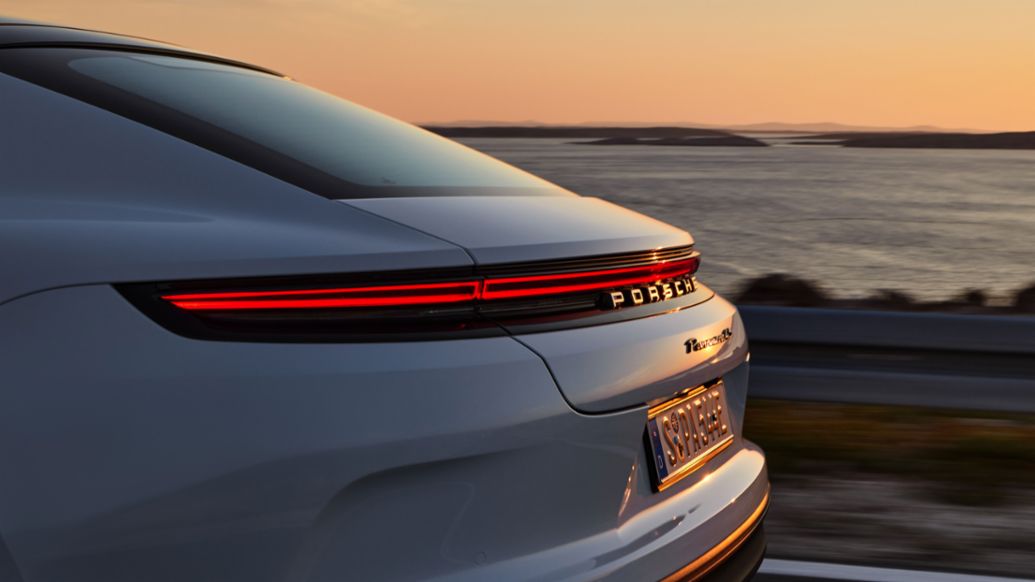
The standard equipment of the Panamera 4 E-Hybrid includes 19-inch wheels and black brake callipers. The Panamera 4S E-Hybrid is distinguished by 20-inch wheels in Panamera AeroDesign, silver sport tailpipes and red brake callipers. Brake callipers in Acid Green and Black are optionally available.
The Panamera 4S E-Hybrid brakes with ten-piston brake callipers at the front axle as standard. Alternatively, the optional PCCB (Porsche Ceramic Composite Brake) is available for this model in conjunction with 21-inch wheels. The ceramic composite discs measure 440 millimetres at the front axle and 410 millimetres at the rear axle.
The Panamera’s extended standard equipment includes ParkAssist and a cooled smartphone tray for wireless charging with up to 15 watts. Options such as rear-axle steering, Passenger Display and air quality system are also available. The Executive body style with a longer wheelbase is also offered; options such as the four-zone automatic climate control or the large centre console are included as standard.
Australian market launch
In Australia, all new Panamera E-Hybrid variants will be additionally fitted with the following features as standard:
All variants
- Privacy glass
- HD-Matrix LED headlights
- Dreams exterior colour paintwork
- Adaptive Cruise Control
- 3D Surround View with Active Parking Support
- Head-Up Display
- Lane Change Assist
- Seat ventilation front
- Soft close doors
- 14-way comfort seats in the front with memory package
- BOSE Surround Sound System
- Digital radio
Select variants
- 20-inch Panamera Turbo wheels (4 E-Hybrid incl. Executive only)
- Comfort access (4 E-Hybrid incl. Executive only, standard on 4S E-Hybrid)
- Panoramic roof system (4 E-Hybrid and 4S E-Hybrid only, standard on 4 E-Hybrid Executive)
- Side airbags in rear compartment (4 E-Hybrid and 4S E-Hybrid only, standard on 4 E-Hybrid Executive)
- 4-zone automatic climate control (4 E-Hybrid and 4S E-Hybrid only, standard on 4 E-Hybrid Executive)
- Ioniser (4S E-Hybrid only)
In Australia, prices and local delivery timing will be announced at a later date.
Info
Published figures should only be used for the purpose of comparison between vehicles. Information provided and images displayed on our website or links from our website may relate to models, performance characteristics, optional extras and features only available in overseas models of the vehicle and must not be relied upon as they may be unavailable in Australia. Please note, product changes may have been made since the production of any content. Please contact an Official Porsche Centre for specific information on current data, vehicles, performance characteristics, optional extras and features available in Australian delivered vehicles.
* The specified charging outputs and times (hour/minutes) are dependent on various factors: in general, the charging output and time can vary due to physical and chemical limits, depending on factors such as the available output of the country-specific energy infrastructure, the customer's own domestic installation, the temperature, interior pre-conditioning and charging status, as well as the age of the battery. Charging times may therefore be significantly higher than those specified. A lithium-ion battery is subject to physical and chemical ageing, as well as wear and tear. This reduces the battery capacity, depending on the usage pattern and environmental conditions, resulting in a reduction in range and an increase in charging times as the battery ages.
# PS (PferdeStärke, German for horsepower) is the standard unit used in the European Union to measure the power output of a motor in ‘metric horsepower’.
